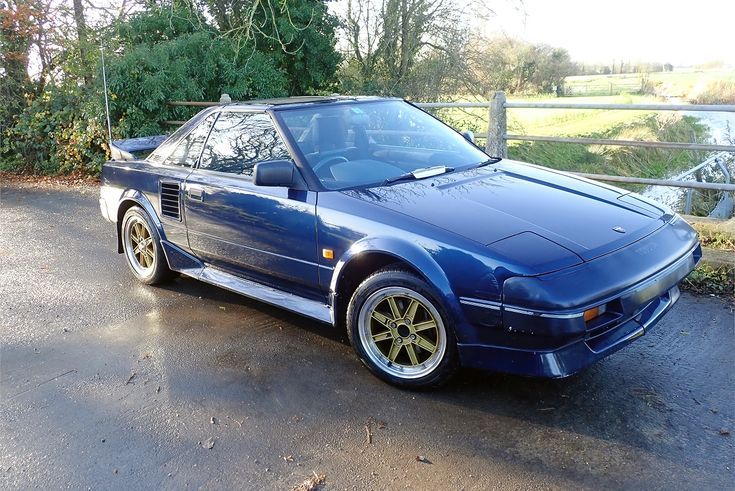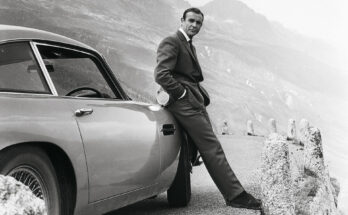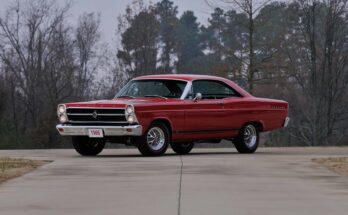The 1987 Toyota MR2 AW11 is a car that might not immediately come to mind for a muscle car enthusiast accustomed to big-block V8s and tire-shredding torque. However, this pint-sized, mid-engined Japanese sports car has a fascinating story that could surprise even the most die-hard fan of American muscle. Here’s an exploration of the 1987 MR2 AW11, its unique place in automotive history, and a few lesser-known tales that make it a hidden gem.

The Birth of Japan’s First Mid-Engined Production Car
The Toyota MR2 (W10 series, chassis code AW11 for the 1.6L version) debuted in 1984 as Japan’s first mid-engined production car, a bold move for a company known for reliable but conservative vehicles like the Corolla. Conceived during the 1970s oil crisis, the MR2—standing for “Midship Runabout 2-seater”—started as an experiment in creating a fuel-efficient yet fun-to-drive car. By 1987, the AW11 had evolved into a refined, lightweight sports car that punched above its weight, offering a driving experience that rivaled pricier exotics.
What makes this story intriguing for a muscle car enthusiast is Toyota’s audacity to take a Corolla’s 1.6L 4A-GE engine—a 112-hp, twin-cam, 16-valve four-cylinder developed with Yamaha—and place it behind the driver, paired with a rear-wheel-drive layout. This wasn’t the brute-force approach of a Pontiac GTO but a surgical strike, prioritizing agility and balance over raw power. At just 2,350 pounds, the MR2’s low weight and mid-engine layout gave it handling that could embarrass heavier, more powerful cars on twisty roads or autocross courses.
The Supercharged Surprise

Here’s where the story gets juicy for a muscle car fan: in 1987, Toyota introduced the MR2 Supercharged (AW11 SC), a variant that added a Roots-type supercharger and intercooler to the 4A-GE engine, boosting output to 145 hp and 140 lb-ft of torque—a 29% and 44% increase over the naturally aspirated version. This was Toyota’s first supercharged production car in decades, and it hit 0-60 mph in about 6.5 seconds, quick enough to keep pace with a Porsche 944S. The supercharged model, identifiable by “Supercharged” decals, dual vents on the engine lid, and unique alloys, brought a dose of muscle-car spirit to the MR2’s lightweight chassis.
What’s lesser-known is that the supercharged MR2 was a rarity, especially in the U.S., where it debuted in 1988 (though available in Japan from 1986). Only a small fraction of the 96,666 AW11s sold in North America from 1984–1989 were supercharged, making them a collector’s item today. The supercharger’s instant torque and high-revving nature gave the MR2 a punchy, visceral feel that could surprise a V8 enthusiast expecting a tame economy car.
Dan Gurney’s Involvement
A tidbit that might catch a muscle car enthusiast off guard is the involvement of American racing legend Dan Gurney in the MR2’s development. Known for his Formula One, NASCAR, and Le Mans exploits, Gurney was brought on to fine-tune the AW11’s handling, ensuring it lived up to its sporty ambitions. His input, alongside Lotus engineer Roger Becker’s work on the suspension, helped make the MR2 a nimble, responsive machine. This high-caliber collaboration is a far cry from the stereotypical “econobox” image some might associate with Toyota, proving the MR2 was a serious driver’s car from the start.
The Rally Car That Never Was
One of the most intriguing untold stories is the MR2’s aborted rally career. In 1985, Toyota Team Europe began developing a rally car based on the AW11, codenamed “222D,” for Group S and potentially Group B competition. This prototype was a beast, with a turbocharged engine and a lightweight body, but it shared little with the production MR2 beyond the basic floorpan. Tragically, Group B was canceled in 1986 after fatal accidents, and Group S followed suit, leaving the 222D as a museum piece. Only 11 prototypes were built, with eight destroyed during testing, making the surviving three ultra-rare relics. For a muscle car fan, this story of a high-performance, rally-ready MR2 shows Toyota’s ambition to compete on the global stage, much like American brands did with drag racing or NASCAR.
A Cult Classic with Quirks
The 1987 MR2 wasn’t without its quirks, which add to its charm. Its mid-engine layout gave it superb handling but also a reputation for snap oversteer, especially in the wet, which could catch out an overzealous driver—a trait not unlike some high-horsepower muscle cars when pushed too hard. Owners on forums like Reddit note that the AW11’s handling is forgiving compared to the later W20 MR2, but it still demands respect.
Another quirky tale comes from a Car and Driver long-term test of a 1985 MR2, where a mysterious stench plagued the cabin for weeks. The culprit? A forgotten club sandwich left under the passenger seat, a humorous reminder that even a “budget exotic” could have very human moments. Despite this, the MR2 proved durable, racking up 30,000 miles with minimal issues, showcasing Toyota’s bulletproof engineering.
Why It Surprises Muscle Car Enthusiasts
For a muscle car enthusiast, the MR2 AW11’s appeal lies in its contrast to the V8 ethos. Instead of overwhelming power, it offers precision and balance, with a rev-happy engine singing at 7,600 rpm right behind the driver. Its 80s wedge-shaped design, pop-up headlights, and optional T-top roof (introduced in 1986) give it a distinctive vibe that rivals the era’s Camaros or Mustangs in cool factor.


